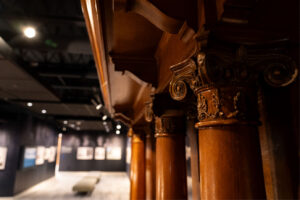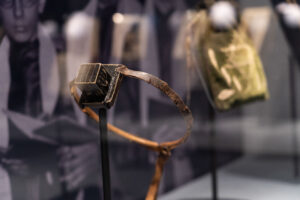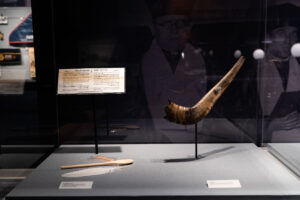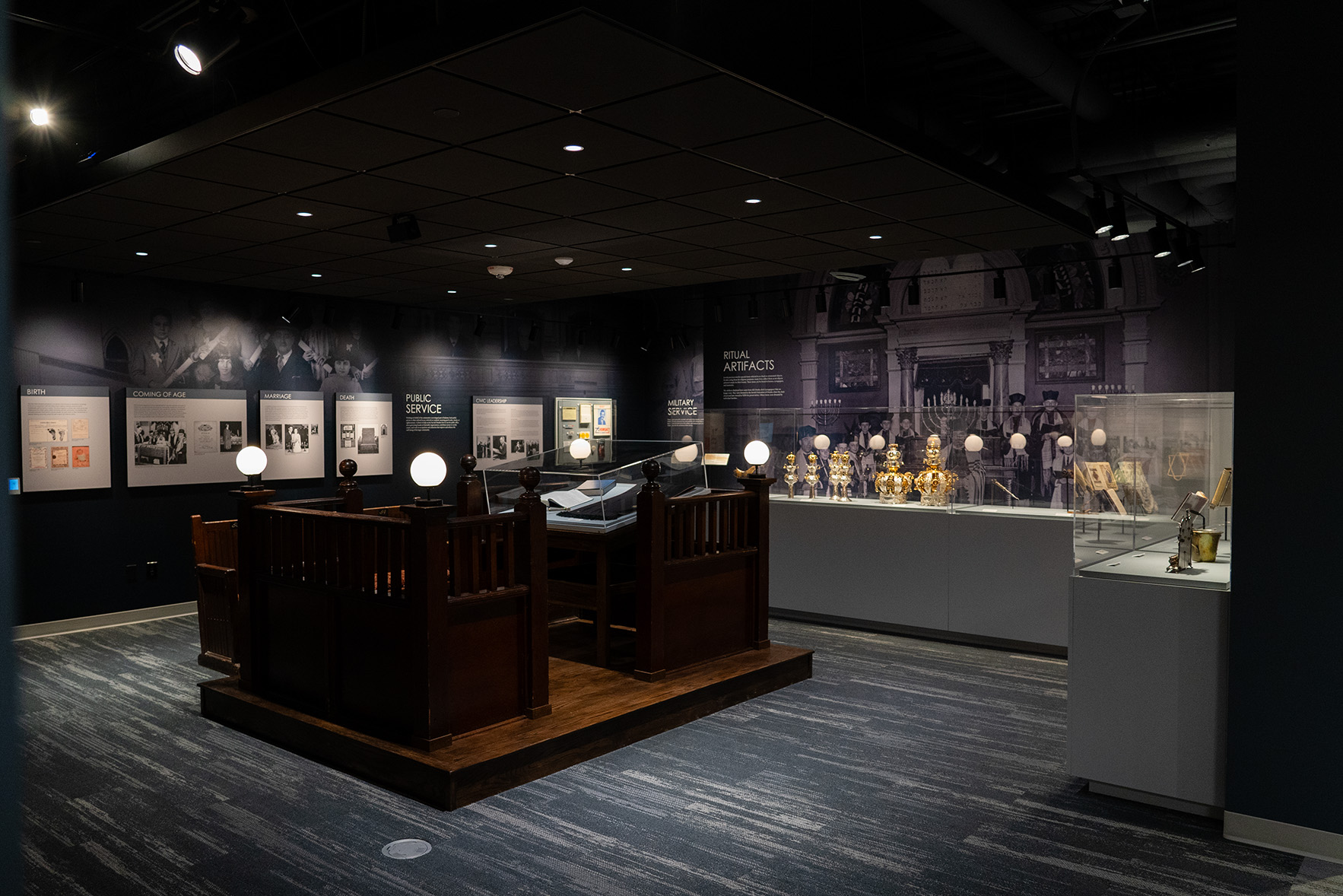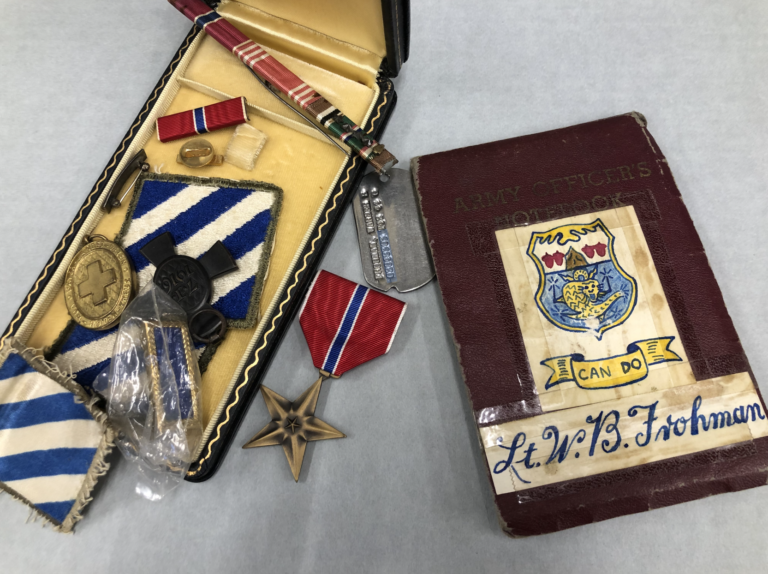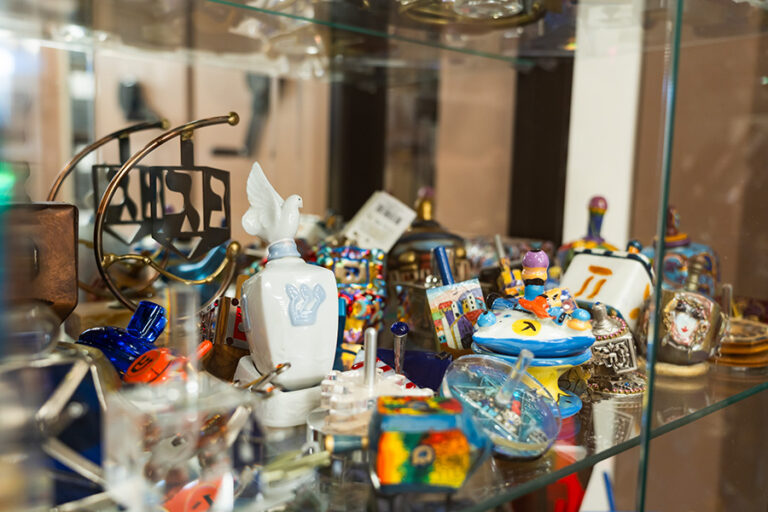
SYNAGOGUE ELEMENTS
The Riekes Museum Gallery contains a reconstruction of a synagogue, a Jewish house of worship. Most synagogues in the United States are oriented to the east, toward Jerusalem. While these buildings differ in their architecture, they all have the following common elements:
Aron Kodesh: This ark or cabinet houses one or more Torah scrolls. The handwritten parchment scrolls contain the first five books of the Hebrew Bible. The Torah is the most sacred object in every synagogue.
Bimah: This is a raised platform from which the Torah is read and religious services are conducted.
Ner Tamid: The Eternal Light is situated near the ark. It is always kept burning as a reminder of God’s eternal presence.
Menorah: This seven-branched candelabra symbolizes the menorah that was used in the ancient Temple in Jerusalem.
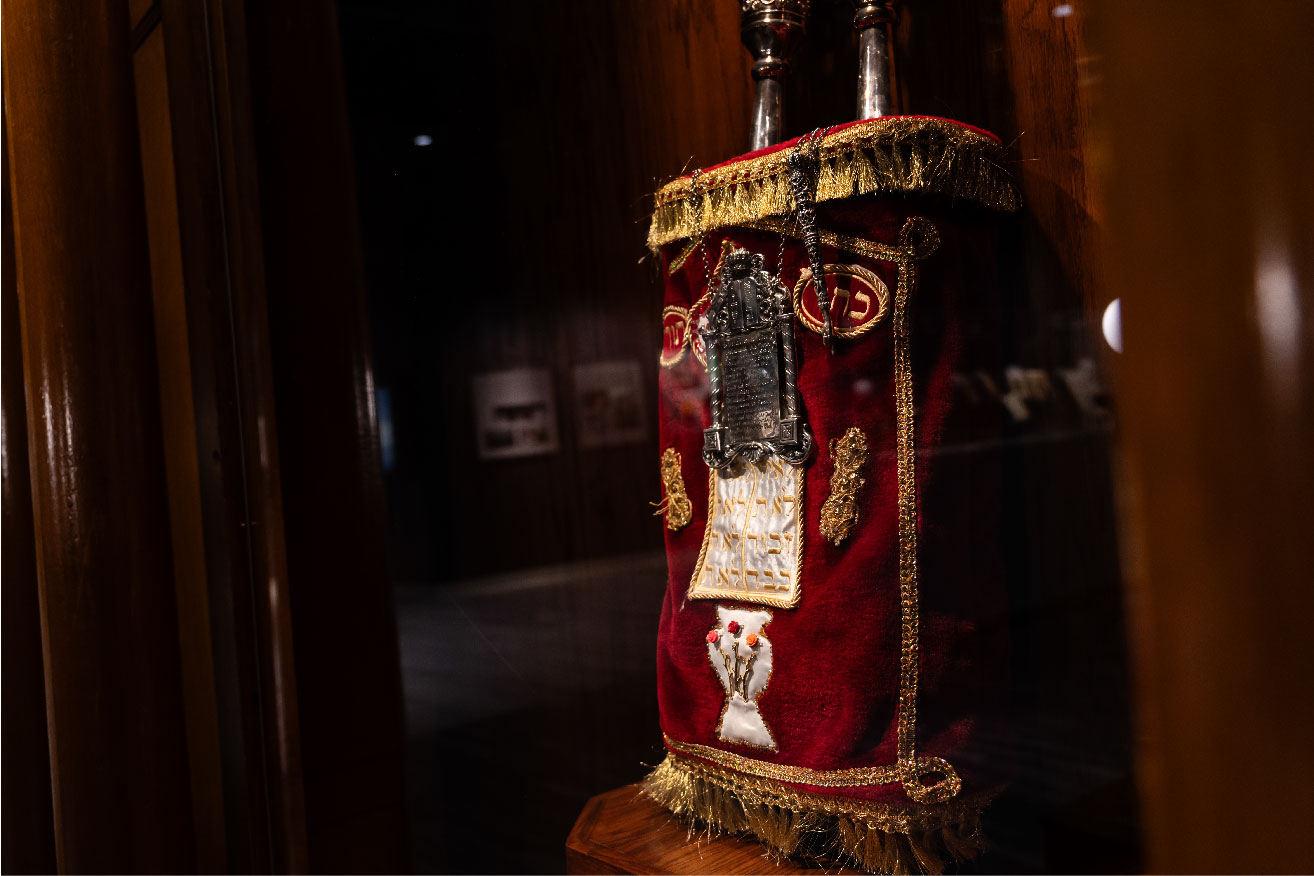
Erman Family Torah
In October 1938, Frieda and Morris Erman prepared to leave Nazi Germany. They arrived at this decision three months earlier when the Nazis accused Morris of profiteering, a manufactured charge targeting Jews. Once an American sponsor was found, they were granted visas. The few Jews remaining in Drove, Germany urged them to take the Torah from the town’s synagogue. They left Germany with three Leica cameras to sell, the Torah, and their three-month-old son, Mike. They arrived in New York City on November 4, 1938. Five days later, Kristallnacht (literally translated as Crystal Night) occurred, leaving the Drove Synagogue and everything in it burned to the ground.

Aron Kodesh – This ark or cabinet houses one or more Torah scrolls.
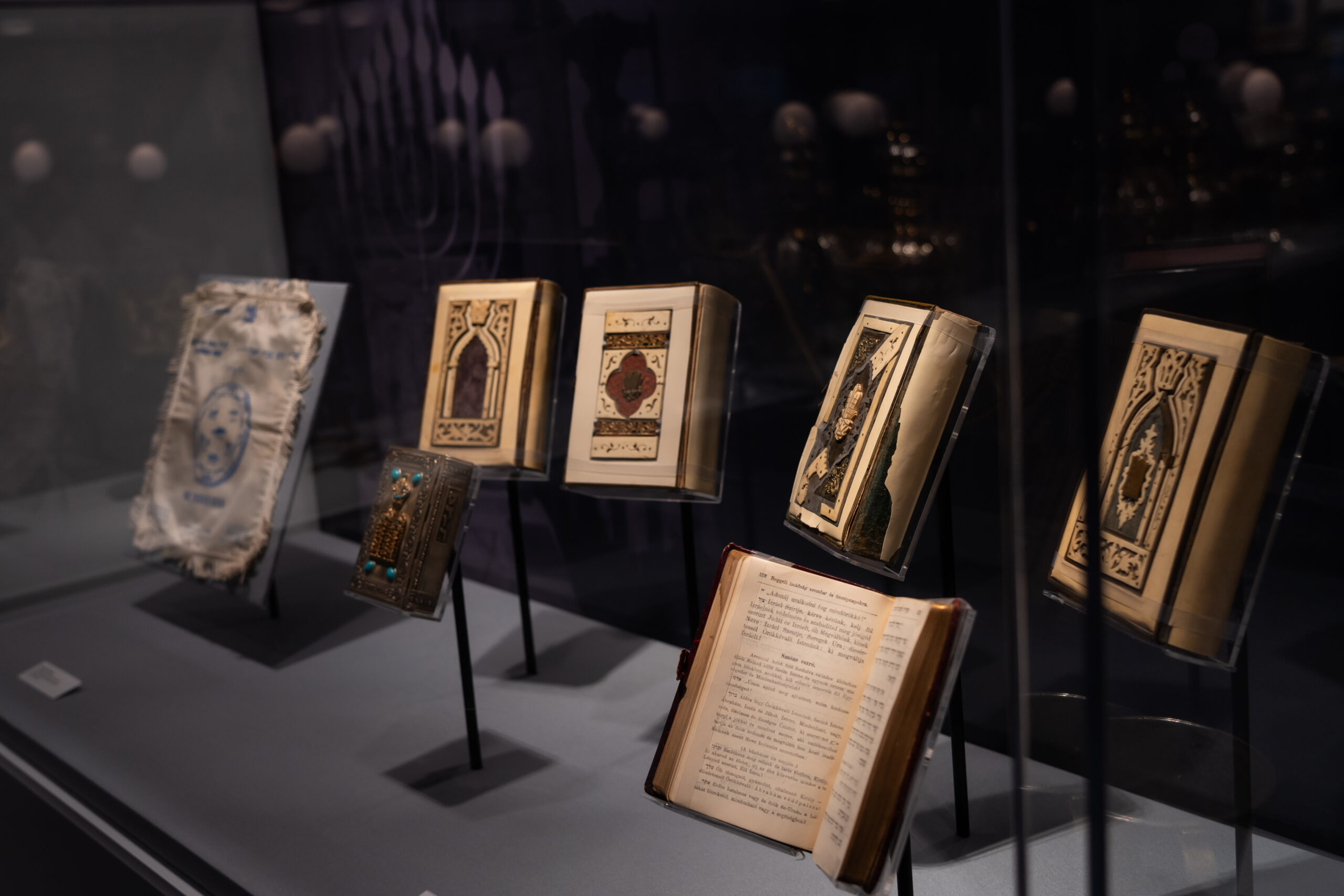
Collection of Siddurs & Machzor – Prayer books with decorative covers used for religious services.
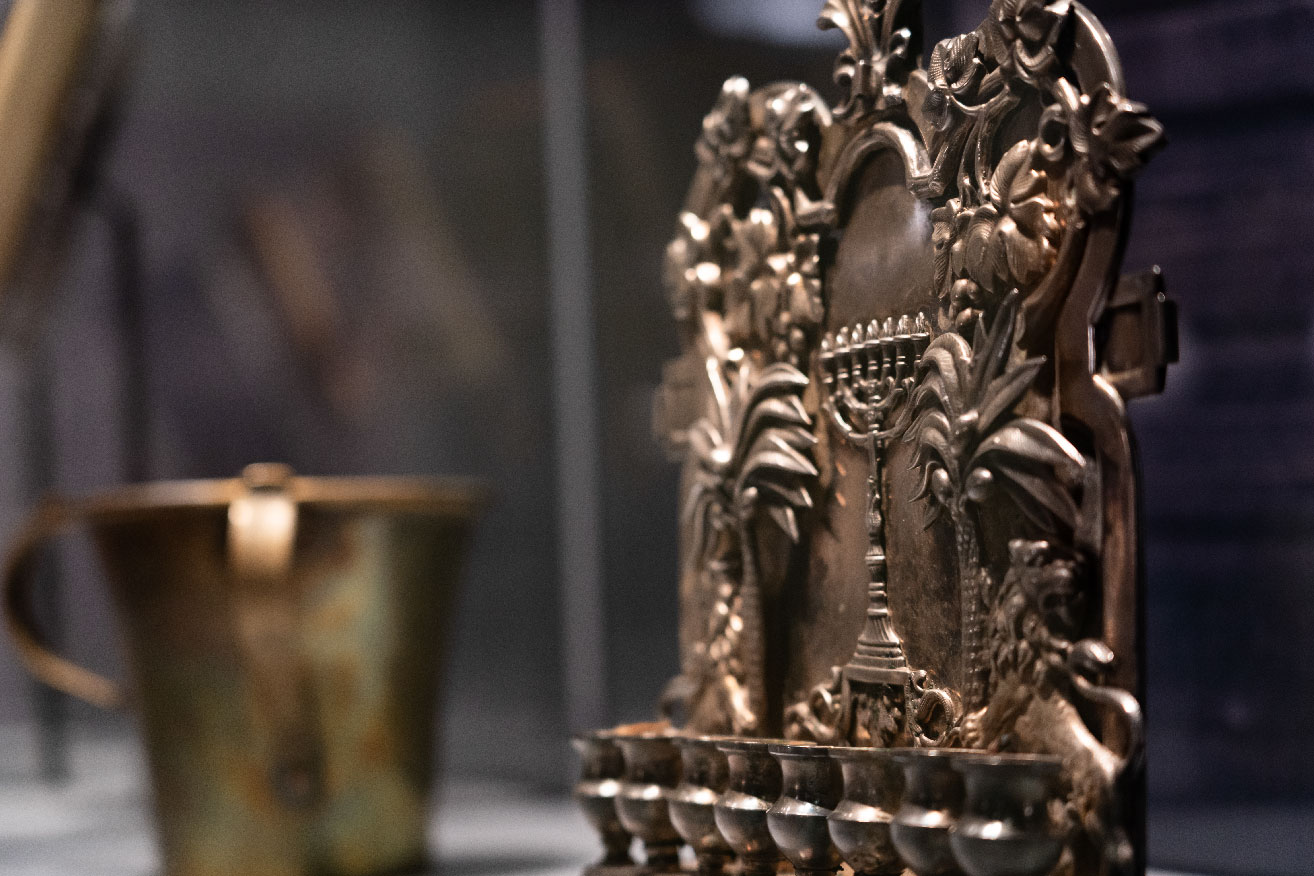
Hanukkiah – A nine-branched menorah used at Hanukkah.
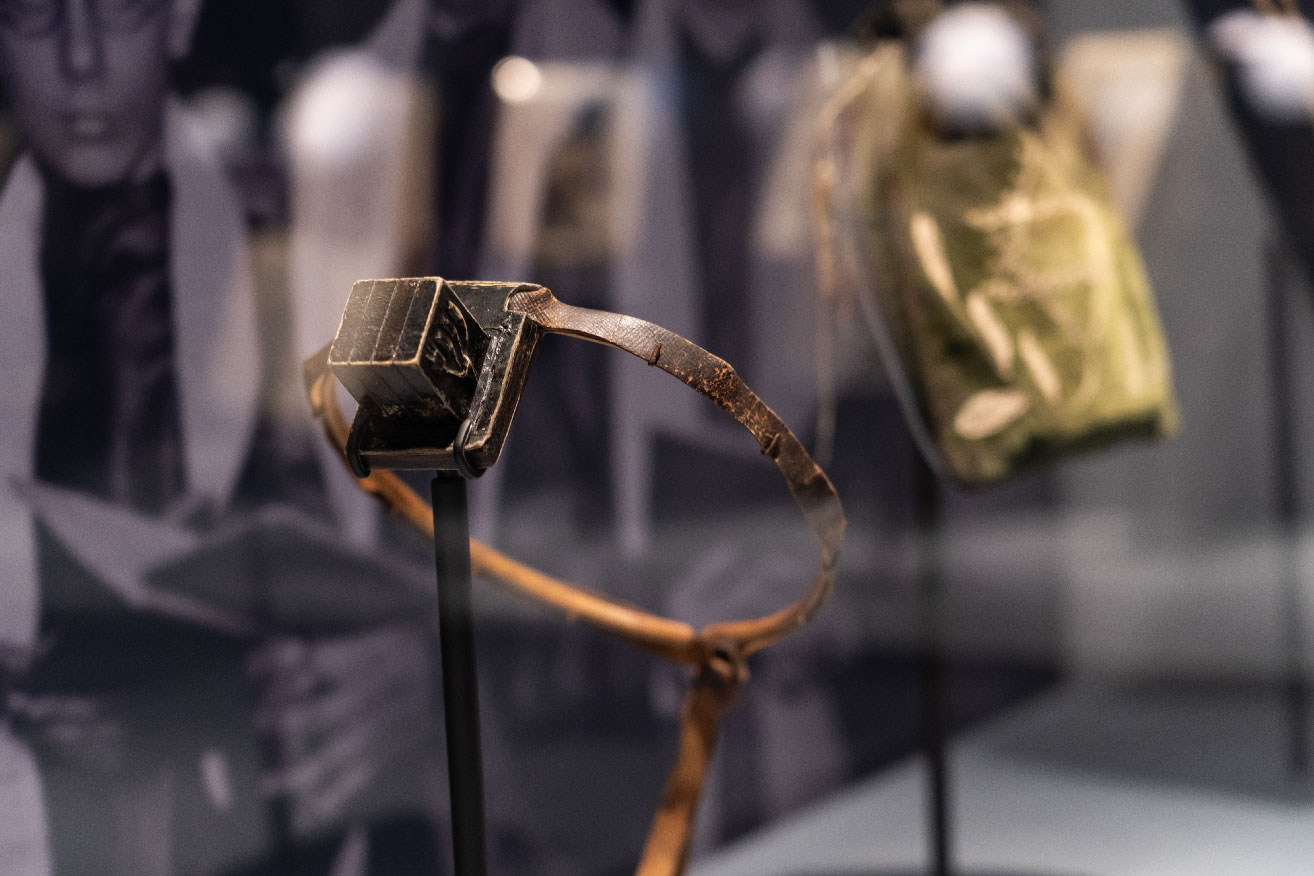
Tefillin – Small, leather boxes worn during morning services. They contain scrolls of parchment inscribed with Biblical verses.
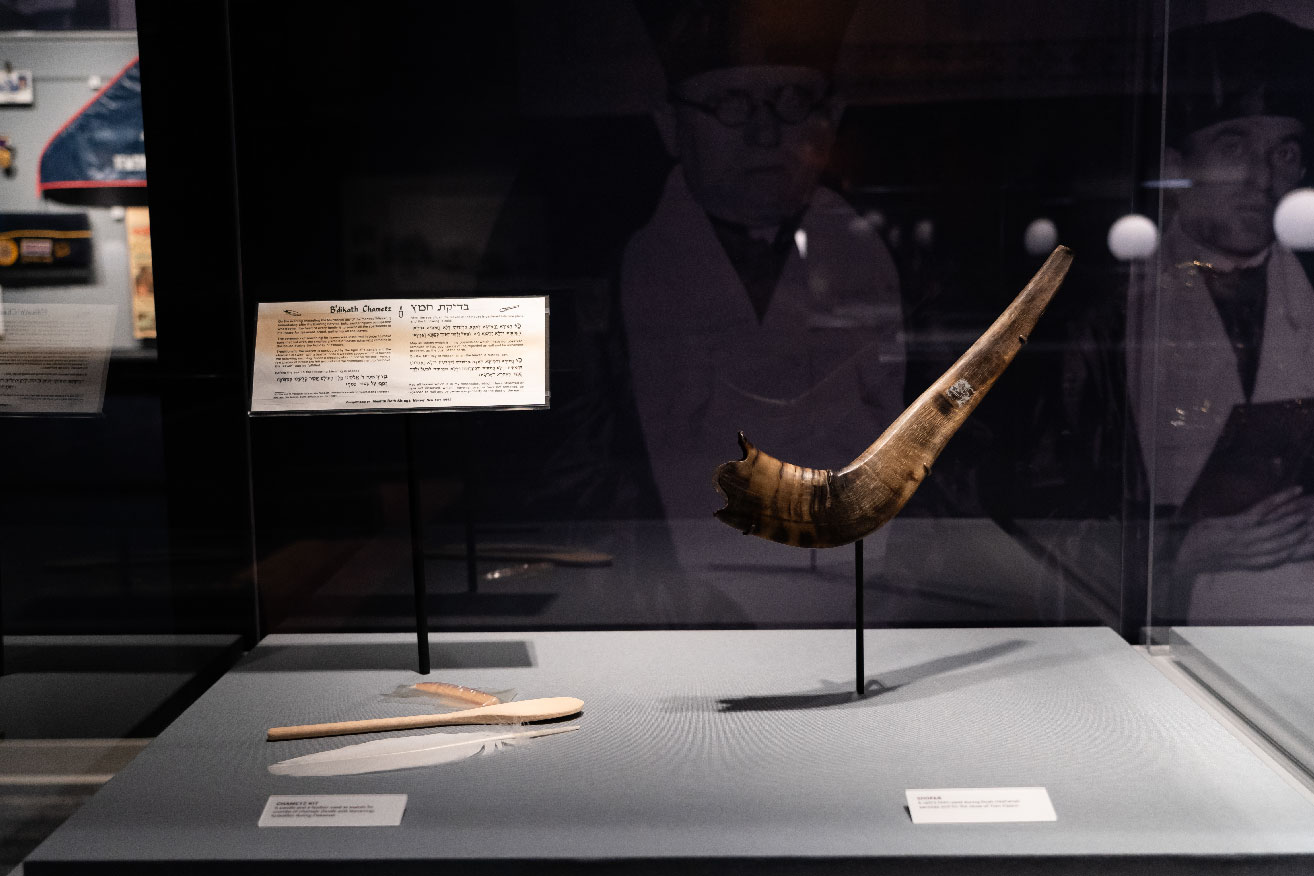
Chametz Kit – A candle and a feather used to search for crumbs of chametz (foods with leavening) forbidden during Passover.
Shofar – A ram’s horn used during Rosh Hashanah services and for the close of Yom Kippur.
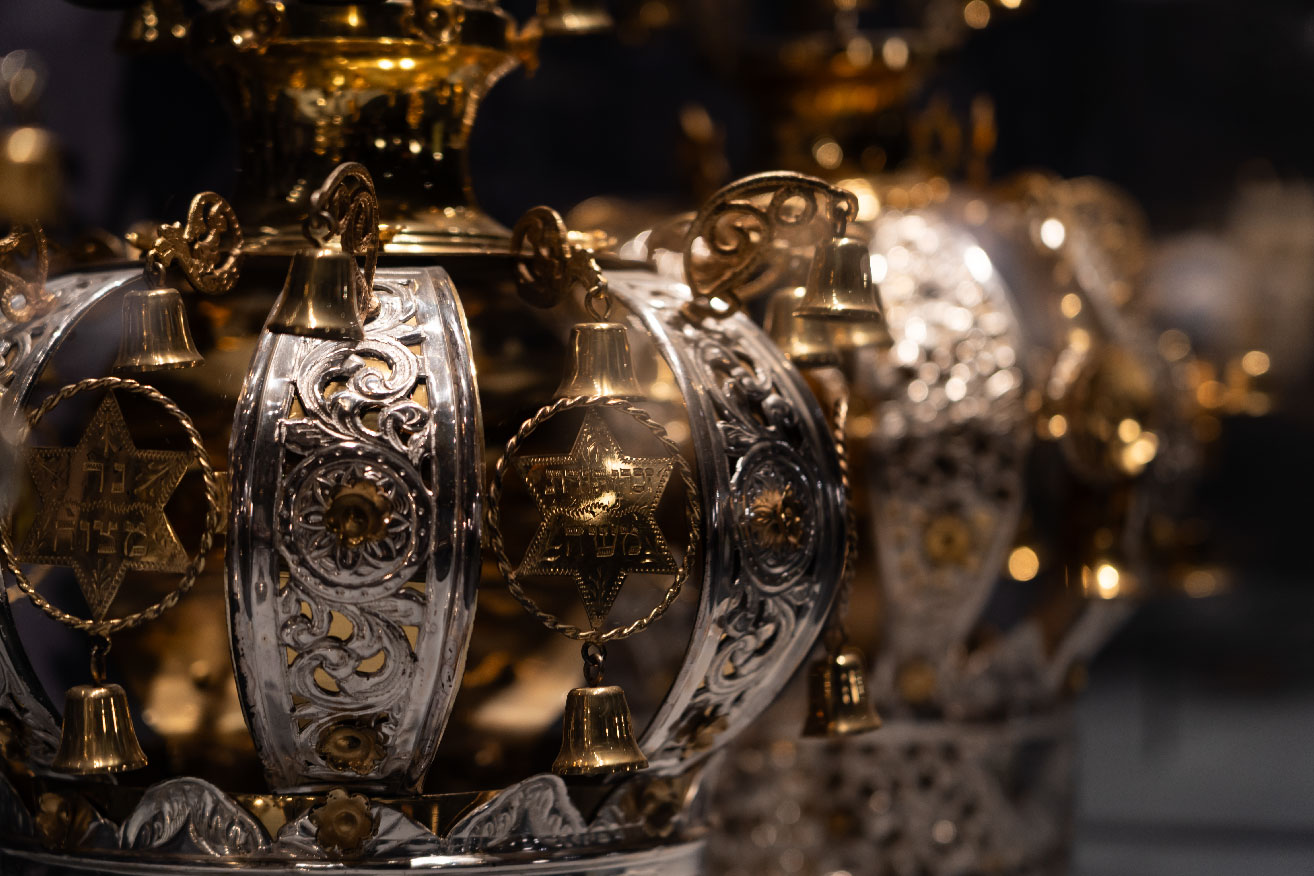
Rimonim – Decorative finials used to adorn the tops of the wooden rollers (etz chaim or trees of life) on the Torah

